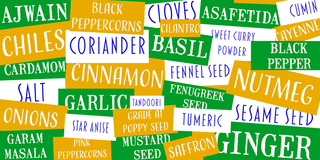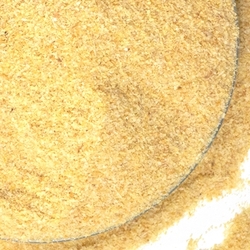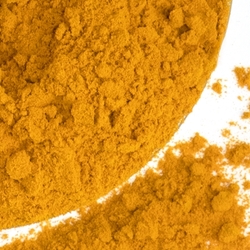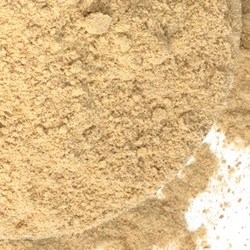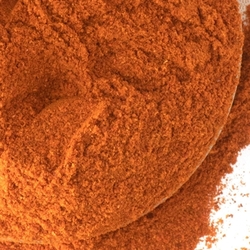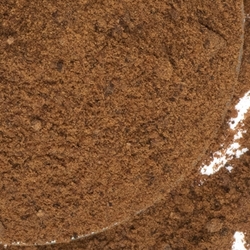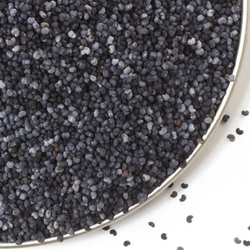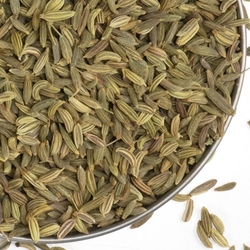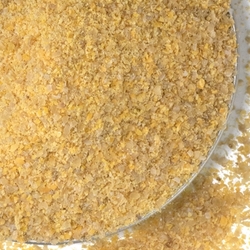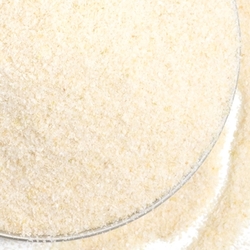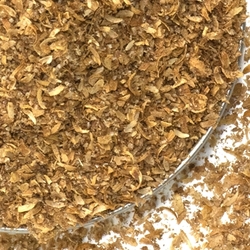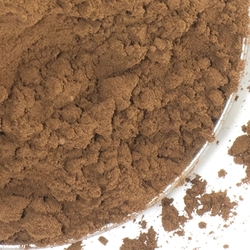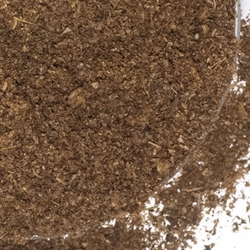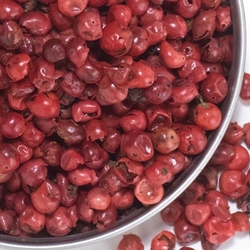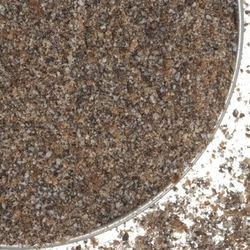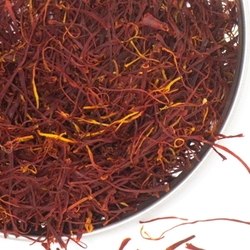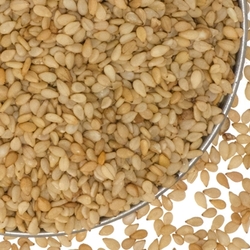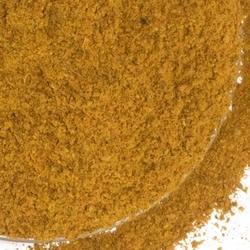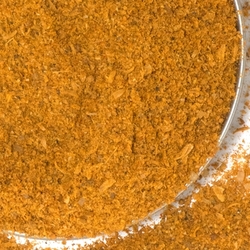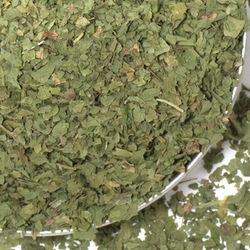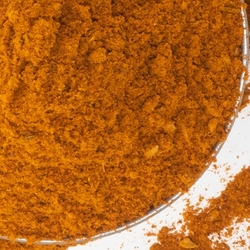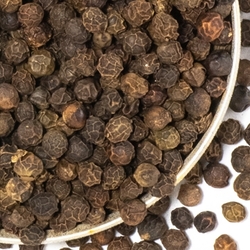Indian Spices and Seasonings

Indian cooks use many more spices and seasonings than cooks in the United States. India has a long and deeply involved history with the spice trade, and its food is rich in spices, herbs, and seasoning blends because of its exposure to so many different choices. All these flavors make sauces and color poultry, meat, fish, grains and vegetables. There are very few foods in the Indian cuisine that do not have spices added, which is partially the reason that Indian foods from all different regions of the country are becoming popular around the world.
Indian recipes are frequently more than just food. They are designed to help attain spiritual, physical, and emotional balance. There is not much that can't be loved about this cuisine, especially the homemade flatbreads and the delicious rice served with nearly every meal. If you have been questioning whether you should branch out into Indian food or not, here is a good sign that you should!
It is easy to become overwhelmed or intimidated by all the different spices of Indian cuisine. Many home cooks even avoid cooking the many delicious Indian foods to avoid learning about the vast number of herbs and spices present. Do not let the numbers fool you, this is an approachable cuisine that can be well loved and mastered over time, just like any other cuisine.
Indian Herbs and Spices
You will discover that our list of Indian herbs and spices contains some whole spices. Cooks all over the world recognize that whole spices are usually better than pre-ground spices because they have the best flavor. They have less surface area exposed to the elements, so they lose their flavor less quickly than ground spices do. Because Indian food is characteristically very flavorful, this is important when considering what spices to buy for your ventures into cooking Indian food. Our ground spices are of the highest quality, so you have little to worry about there, but if you are thinking of buying them from the grocery store you should consider purchasing whole spices.
Spice blooming is a practice that Indian chefs know very well. They either bloom the spices in oil or ghee. Ghee is a clarified butter made from the butter of a cow's milk. The blooming process is one where you fry the spices gently in oil. You can do this with either whole or ground spices and it typically only takes a few seconds, as you only fry them until they smell fragrant. Any longer and you risk having your spices burn.
- Asafoetida- Very popular in vegetarian dishes, this is an extremely fragrant spice that to the unfamiliar may seem overwhelming. It has a very strong, very pungent scent that lingers in the kitchen for long after cooking has ended. This spice is used most frequently in the Southern parts of India, where cuisine is predominantly vegetarian. Keep this sealed tight until it's time to use, the scent will permeate everything that it can if the container is left open.
- Basil- As an herb in India, basil is probably one of the most important. It is called the "Queen of the Herbs" and is grown all over the place. Some families even grow basil by their front doors to keep the energy of their household pure. Its unique flavor, which is both sweet and slightly spicy, is a perfect addition to many Indian foods.
- Cardamom Seed Powder- Cardamom is both lemony and sweet. It is considered the Queen of Spices in India.
- Cayenne- Cayenne can be added to dishes in the Indian cuisine for both color and flavor.
- Chiles- Indian cuisine uses chiles in multiple different ways. Chiles are dried, roasted, and salted and are used as a side dish for rice dishes. People even snack on chiles which have been battered and deep fried.
- Cilantro- Cilantro is a key ingredient in some spice blends. It is used in this cuisine in soups, salads, and sauces. Cilantro is also sometimes called coriander.
- Cinnamon- This spice is popular in chutneys and with meat or rice dishes. Whole cinnamon sticks are sometimes used in Indian cooking, but are always removed before serving.
- Cloves- Ground cloves are found predominantly in northern Indian cuisine where it is used in almost every sauce and side dish. They are also great in teas.
- Coriander- Coriander seed powder comes from the seeds that grow into cilantro. The flavor of this spice is warm and citrusy, making it perfect for meats, eggs, and poultry.
- Fennel Seed- These seeds are chewed after a meal to freshen breath but can also be used in cooking. It is an essential ingredient in curries and boasts an anise flavor with licorice undertones.
- Fenugreek Seed- These seeds are rich in protein, making them a perfect addition for many vegetarian dishes. It's popular in many sauces in the Indian cuisine.
- Garlic- A lot of Indian recipes call for fresh garlic, but granules are a good replacement for this. You will find garlic in eat dishes, curries, and in vegetable-based dishes.
- Ginger- This is a popular ingredient in curries and chutneys. It is also popular with fish and poultry. The flavor is intense and sharp, and does take some getting used to if you've never had it before.
- Mustard Seed Powder- Indian cooks use mustard seed to flavor sauces, mayonnaise, dry rubs, and dressings. It has a strong, powerful flavor and a distinctive coloring. It is also used when flavoring processed sausages or other meats.
- Nutmeg- This spice has a bittersweet flavor that to Americans will seem most familiar around the holidays. We use nutmeg frequently in holiday themed treats, whereas Indian chefs will use it all year in different spice blends and with many types of food.
- Onion- Onion is just like garlic in the way that it can go with nearly every Indian meal and find a home there. Onion is delicious and savory, lending itself to flavoring meats, vegetables, and in curries. Fresh or dried do just fine in this cuisine.
- Pink Peppercorns- Their beautiful color and lovely spicy-sweet flavor makes these perfect for cocktail sauces and with fish.
- Poppy Seed- Poppy seeds are ground and used as a thickening agent in curries and sauces. They may also be found in different types of bread.
- Saffron- Famously used in Indian Saffron rice and on lamb, this spice has a flavor profile that is musky, sharp, and floral with honey undertones. It is a hard to get spice which is worth more per pound than even gold. It is harvested by hand and gives many Indian dishes their yellowed color.
- Salt- This is used similarly to how it is used in Western cuisines, but it is used with a much lighter hand. Many cooks will use salt to enhance the flavors of their dish but prioritize other spices first. Salt is just a little something that may be added for an extra oomph.
- Toasted Sesame Seeds- Nutty with a little bit of a crunch, these seeds give a nice pronounced flavor which compliments meats and vegetables nicely.
- Ground Star Anise- Star anise has a powerful licorice flavor and is much more pungent than anise seed. This is used frequently in curry powders and is often an ingredient in Garam Masala.
- Turmeric- This is the spice you probably thought of when you read the title of this blog post. That's because turmeric gives many Indian foods their characteristic coloring. Turmeric is not only used in food, but it is also used in many ceremonies, including wedding ceremonies. Brides to be often wear a mask of turmeric on their skin the night before the big day to encourage a natural glow.
Indian Seasonings
There are some seasoning blends that are prominent and important in Indian cuisine, whether legitimate or Indian cuisine found in other parts of the world that simply imitates it.
- Garam Masala- Common in Indian cuisine, garam masala is a general purpose seasoning blend. It is spicy and warm, but not necessarily hot. It is often found in things like dahl, kormas, samosas, tandoori, meat and poultry.
- Maharajah Style Curry Powder- This is a spice blend that is more popular in imitating Indian food than in actual Indian cuisine. Curries, and the idea of curries, come from the British and are sort of a foreign idea for Indian cooks.
- Tikka Masala- This spice blend is used in what most foreigners consider to be the penultimate Indian dish, Chicken Tikka Masala. Tikka means "pieces" and masala means "spice blend" so the name is essentially a call to this dish, which is comprised of chunks of chicken marinated in a yogurt and spice mix and then either baked or grilled.
Indian spices and seasonings are some of the best, most flavorfully complex available. Explore one of the most unique food cultures out there with this guide to many different flavors that come together to form one delicious cuisine.

